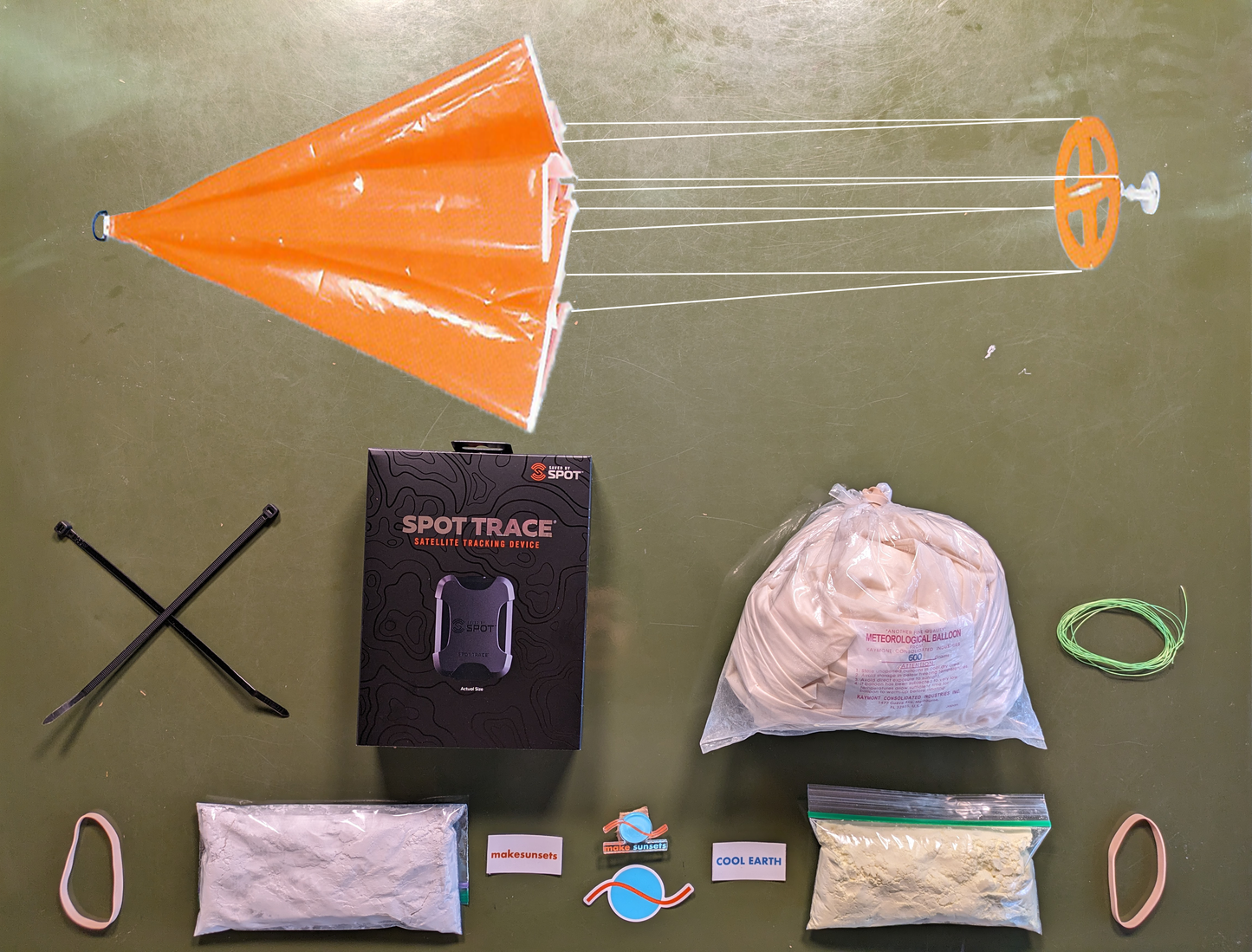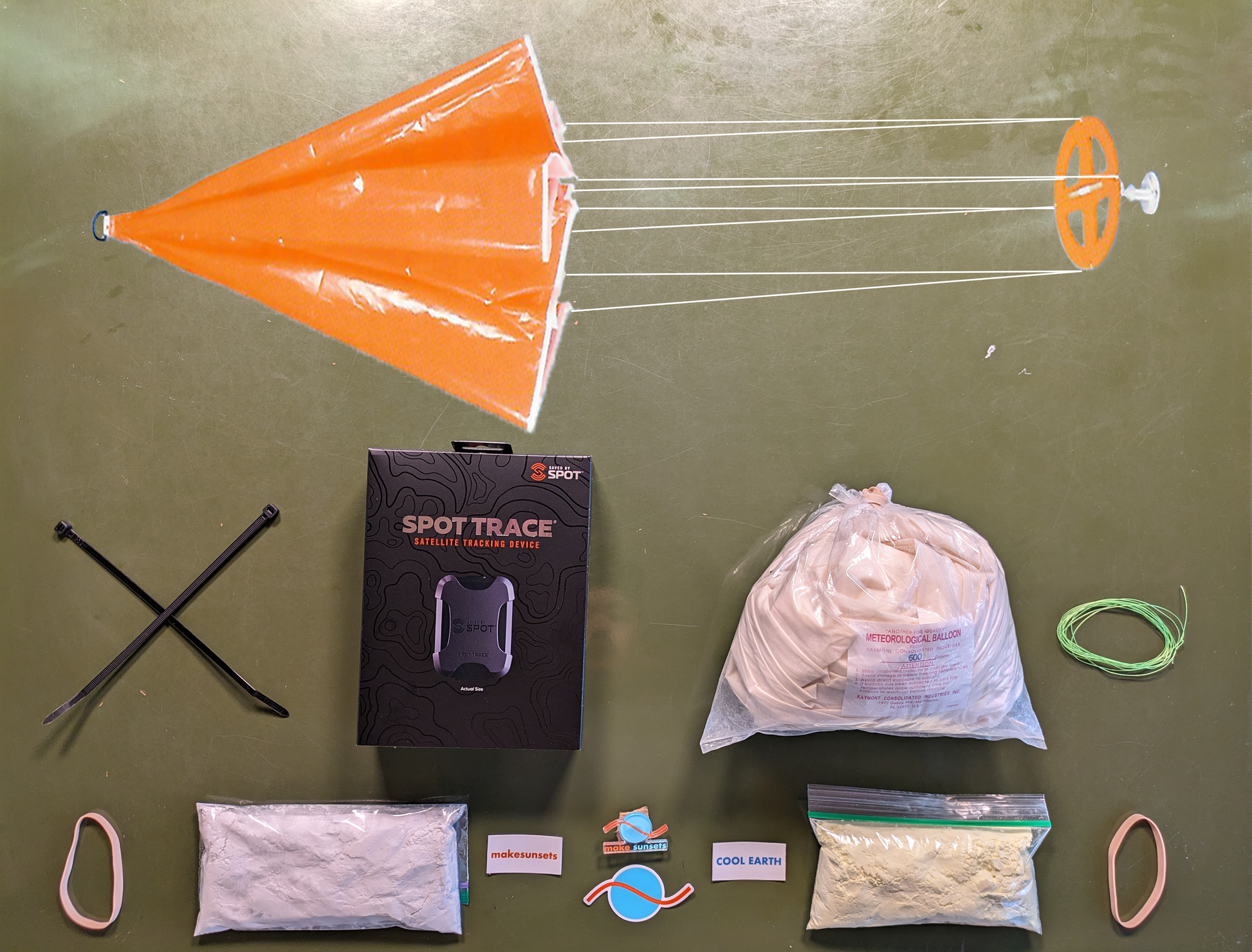One Cooling Credit offsets one ton of CO2 warming for a year. How does one gram of SO₂ offset one ton of CO₂ warming for a year?
Estimates vary, but a leading researcher cites "geoengineering’s leverage is very high — one gram of particles in the stratosphere prevents the warming caused by a ton of carbon dioxide," and “a gram of aerosol in the stratosphere, delivered perhaps by high-flying jets, could offset the warming effect of a ton of carbon dioxide, a factor of 1 million to 1."
Couldn't load pickup availability
This is the real deal; until we graduated to 1500g balloons, these were our bread and butter launch setups.
Includes:
- 600g latex weather balloon
- Parachute
- Our favorite satellite tracker (cuts out around 10km then back in on way down... sometimes)
- 200g calcium carbonate
- 200g sulfur (design a high-altitude burner for this to make so2 in-stratosphere pls)
- Rubber bands
- Some reusable zip ties (always handy)
- <50 pound test line
- A printout of our launch checklist
- At least 2 pieces of lucky Make Sunsets schwag
You need to add:
- Spot subscription (if you want to track)
- Lift gas (helium unless you really are sure you won't blow yourself up with hydrogen)
You probably want to add:
- Electrical tape (after the rubber bands, to be extra secure)
- Some chunk of foam or something that floats (if launching where you might land in water). We've actually had good results recycling the box + foam the spot tracker comes in!
- Bulk sulfur dioxide, if you're going to do this a lot. Please don't do this unless you are safe about it, including an appropriate air filter. We use something like this (outside), and please do your own research here.
- Airtag or Pebblebee if you have Android to make finding payload easier (if you want to recover)
- Nozzle for lift gas and SO2. Here are the nozzles
Instructions on how to Cool Earth via Make Magazine.

-
We should obviously be doing solar geoengineering. We are on track to radically reduce emissions in the coming years but thermal damage will lag our course correction so most of our climate pain is still ahead of us. Why risk destabilizing the West Antarctic ice sheet or melting the arctic permafrost or wet bulbing a hundred million people to death? Solar geoengineering can incrementally and reversibly buy down the risk during this knife-edge transition to a better future. We owe future generations to take all practical steps to dodge avoidable catastrophic and lasting damage to our planet.
Casey Handmer, PhD from Caltech -
It’s a small way I can help with a seemly very large problem! For what it’s worth, $200 offset 20 tons of CO2 is a great win!
Brian Vallelunga, CEO of Doppler -
At some point, you learn about reflective particles as a potential cooling method. The next question would be: 'Is anyone doing this now?' This led to the discovery of Make Sunsets, a team that not only explores solar radiation management techniques but also works to implement them. It's incredibly reassuring to see a group like Make Sunsets pushing the boundaries of scientific research, aiming to create a cooler, more sustainable future for everyone.
Kevin S. Thompson, Austin, Texas
